The ‘War on Terror’ rages in the Philippines
In 2002, the US launched Operation Enduring Freedom-Philippines; nine years later, the campaign there continues.
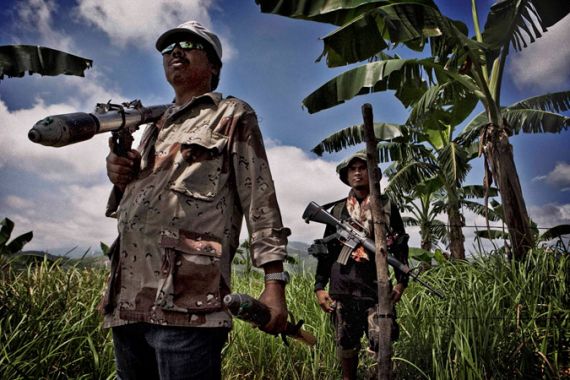
As violence between insurgent groups, local governments and American troops still rages in Afghanistan and Iraq, the United States continues to sponsor local military missions to combat “terrorism” in dozens of countries encompassing every major region of the world. The so-called Global War on Terror, now entering its tenth year, has become a military behemoth that accounts for the majority of US defense spending.
In the Philippines, a staunch US ally that receives most of its military funding and training from the US, the Pentagon launched Operation Enduring Freedom-Philippines – part of a military effort linked with the main Operation Enduring Freedom mission in Afghanistan – to fight “terrorist insurgent groups” in 2002.
Although the military describes its mission in the Philippines as a success, nearly ten years later, the results are devastating. All-out wars against the Muslim separatist group Moro Islamic Liberation Front (MILF), the communist guerilla group New People’s Army (NPA) and the Islamist insurgent group Abu Sayyaf have left a trail of destruction across rural areas of the country.
While the American military argues that its presence has been a stabilising factor in the southern Philippines, wars between the government and insurgents continue with killings on a near-daily basis. And although the Philippine constitution prohibits foreign troops from participating in combat operations in the country, joint operations in war zones are often labeled military “exercises” to avoid controversy.
Nearly ten years after the initial troop deployment some 600 American special operations forces remain in the country, and will likely stay there for the foreseeable future.
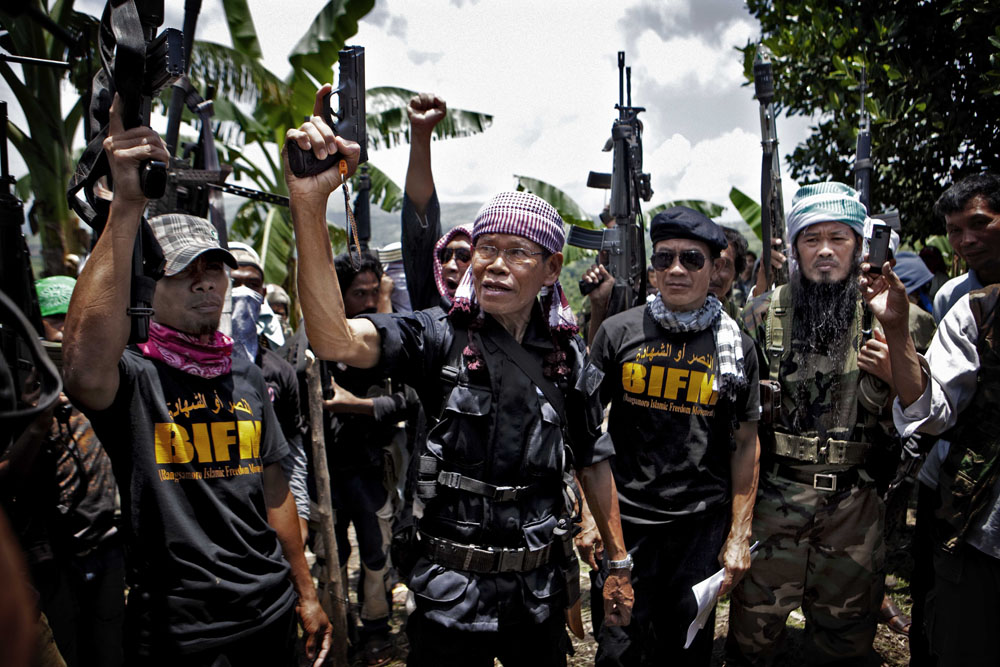 |
| 1) Ameril Umbra Kato (centre), the leader of the breakaway Muslim rebel group, Bangsamoro Islamic Freedom Movement (BIFM), brandishes his gun with his soldiers at Camp Omar, Maguindanao, August 28, 2011. Kato recently split from the Moro Islamic Liberation Front (MILF), citing his disagreement with the MILF’s ongoing peace talks with the government [Joe Penney/Al Jazeera] |
 |
| 2) Soldiers from Bangsamoro Islamic Freedom Movement (BIFM). The US accuses BIFM leader Ameril Umbra Kato of harbouring terrorists within the BIFM ranks, a charge which Kato vehemently denies. Kato says he has seen American drones and soldiers in territory his group claims, and says he will fight US troops if provoked [Joe Penney/Al Jazeera] |
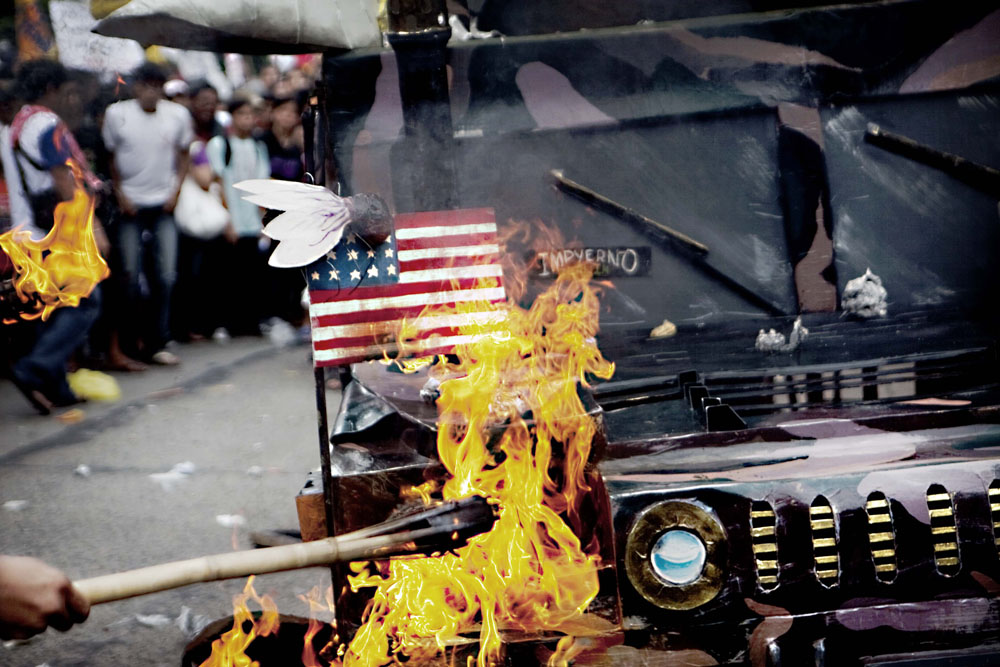 |
| 3) An activist burns a cardboard American flag during an opposition rally outside the National Parliament in Manila, July 25, 2011. Activists often protest the Visiting Forces Agreement, a bilateral accord signed in 1999 that allows American troops to enter the Philippines without a visa, and without informing the Philippine public of the specifics of their activities [Joe Penney/Al Jazeera] |
 |
| 4) A Philippine soldier guards the newly constructed Grand Mosque of Cotabato City, Mindanao, August 29, 2011. Fighting between government and rebel Muslim forces for nearly four decades has created an entrenched environment of militarisation throughout Muslim-dominated regions in the southern Philippines [Joe Penney/Al Jazeera] |
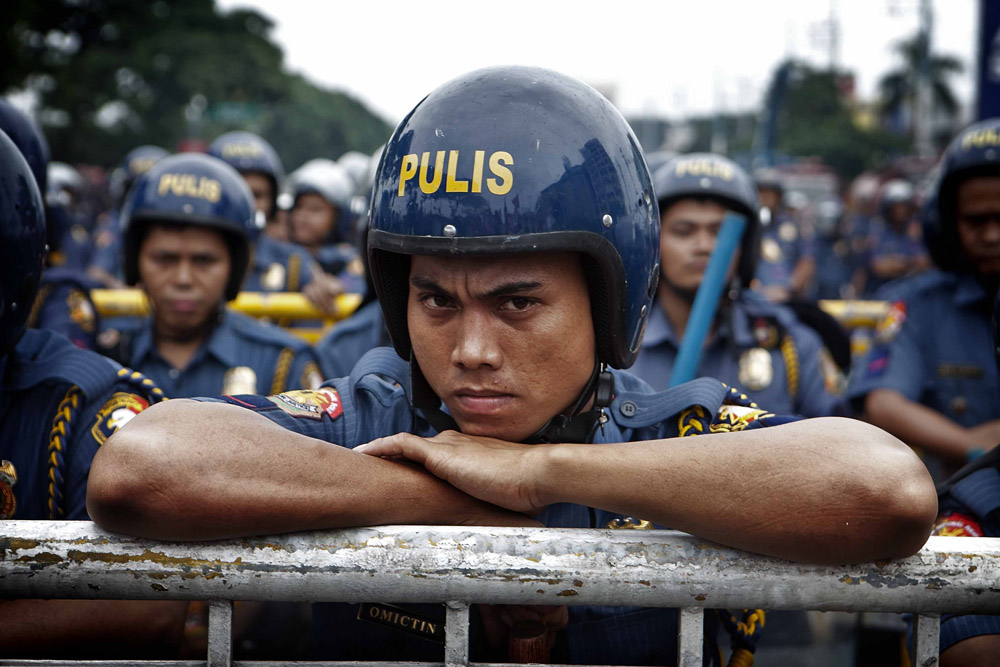 |
| 5) A police officer in riot gear stands guard at an opposition rally in Manila, July 25, 2011. Human rights groups accuse the Philippine National Police (PNP) of committing hundreds of extrajudicial killings since 9/11. A 2005 Wikileaks cable sent from the American embassy in Manila noted that apart from corruption, many cops undertake investigative short cuts that often employ physical abuse, the planting of evidence, and sometimes, allegedly under guidance from local elected officials, the extra-judicial killing of criminal suspects [Joe Penney/Al Jazeera] |
 |
| 6) Police officers sleep on the floor during a peaceful protest against President Benigno Aquino III, July 25, 2011. A 2005 Wikileaks cable sent from the American embassy described the Philippine National Police management as a mess and noted that it is considered the most corrupt institution in the country [Joe Penney/Al Jazeera] |
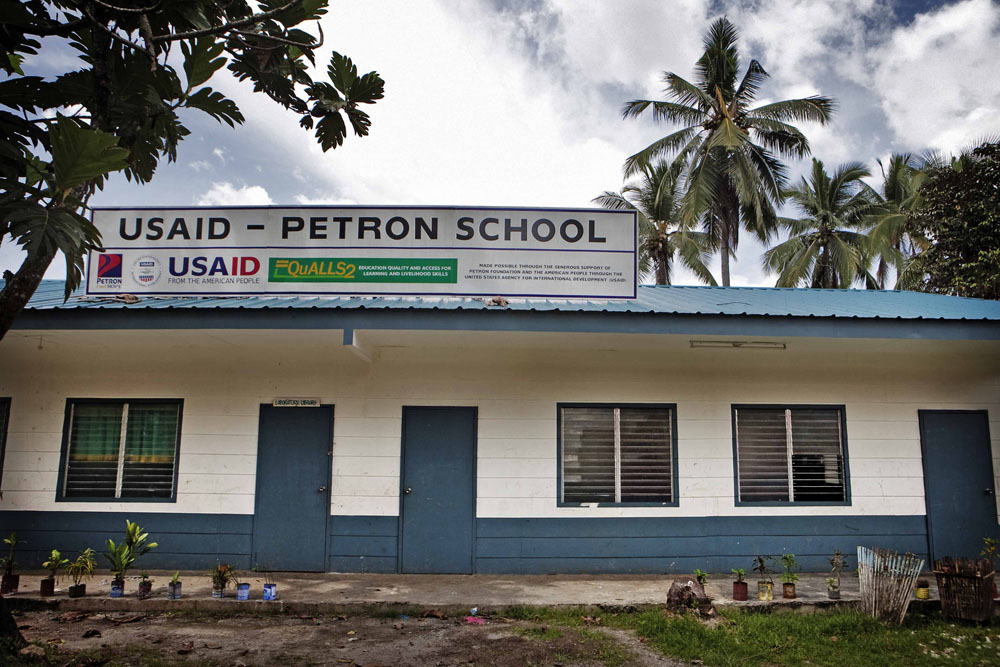 |
| 7) A school funded by USAID and Philippine oil company Petron is seen in oil-rich Datu Piang, Maguindanao province, August 29, 2011. As an integral part of the American ‘War on Terror’ in the Philippines, USAID is used as soft power, spending nearly $40m a year on various projects in Mindanao, especially in conflict areas to address the root causes of terrorism and help alleviate poverty [Joe Penney/Al Jazeera] |
 |
| 8) Activists gesture at a rally during President Benigno Aquino III’s annual State of the Nation Address, July 25, 2011. President Aquino has focused much energy and US funding for the ‘War on Terror’ in the Philippines against leftists and Muslim insurgents [Joe Penney/Al Jazeera] |
 |
| 9) The exterior of the SM North Mall along EDSA Avenue in Metro Manila is seen through a window from its interior, July 29, 2011. Malls have been frequent targets of bombings, which are usually attributed to the terrorist-listed Abu Sayyaf Group. Since 2000 armed security guards inspect all bags entering malls in the Philippines, heightening the militarised atmosphere [Joe Penney/Al Jazeera] |
 |
| 10) A small-scale gold mine is seen at Panganason village in the resource-rich mountains of the Compostela Valley, August 22, 2011. A senior government official described Mindanao as a treasure trove, according to a leaked diplomatic cable sent from the American embassy in Manila in 2006. The cable also noted that up to 70 per cent of the Philippines’ mineral resources may be in Mindanao, and that multinational firms are already eyeing areas in Mindanao for possible projects [Joe Penney/Al Jazeera] |
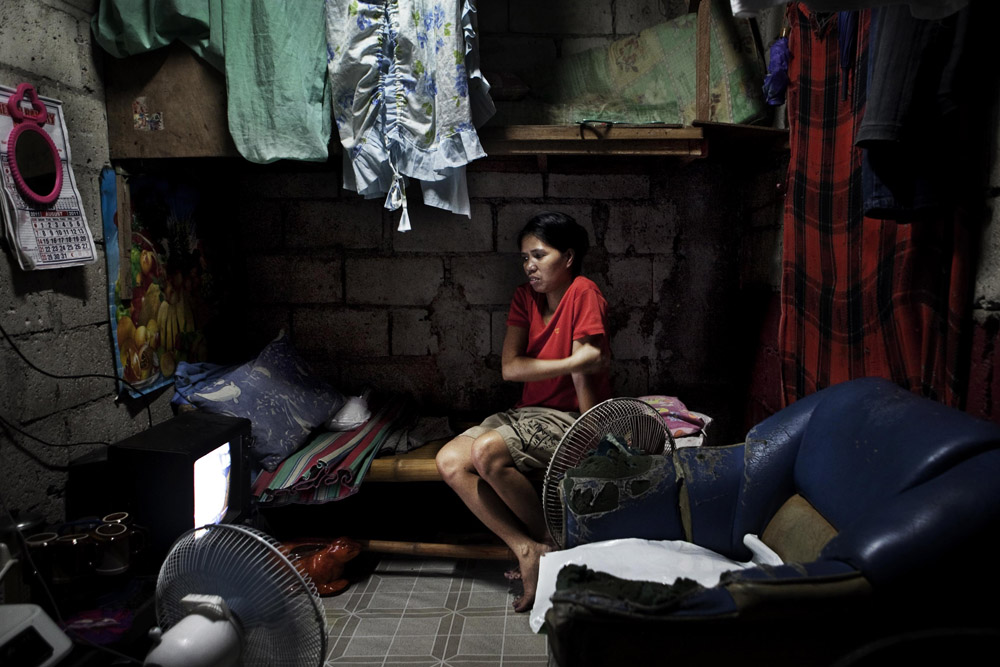 |
| 11) Lenonona Abellano watches television in the boarding room she shares with three other people in Cavite, Southern Tagalog region, July 12, 2011. Millions of women work in garment factories producing clothes for American retailers. Abellano works for a Korean subcontractor making clothes for Gap. She has worked in factories nearly all of her adult life and makes less than $8 a day [Joe Penney/Al Jazeera] |
 |
| 12) A banana plantation workers union meets at night in Davao Oriental, Mindanao, August 23, 2011. While a leaked diplomatic cable sent from the American embassy in Manila in 2006 argues that that Dole employment opportunities have brought visible improvements to the quality of life for many people, plantation workers say that American and Japanese firms that dominate the agricultural export industry often engage in union-busting practices and keep their wages at subsistence level or below [Joe Penney/Al Jazeera] |
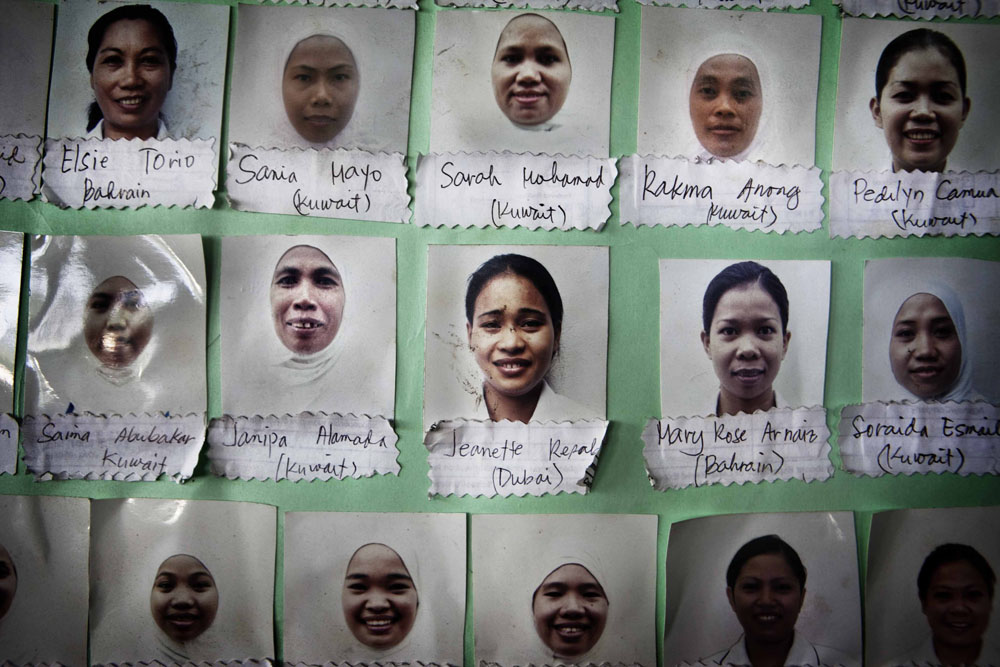 |
| 13) Pictures of women working as domestic helpers abroad are pasted on a wall of a overseas employment placement agency in Cotabato City, Mindanao, on August 26, 2011. Women from the majority-Muslim areas of the Philippines in the south of the country are often recruited to work as domestic helpers in Muslim countries in the Middle East. As violence between government and insurgent forces fluctuates, many women look for positions of menial labor abroad to sustain themselves and their families [Joe Penney/Al Jazeera] |
 |
| 14) The mother of Solimon Gomez embraces a picture of her murdered son on the outskirts of Manila, August 5, 2011. Gomez, a community activist in a slum north of the national capital, was murdered in July by security agents while attempting to block demolition of houses in his neighborhood [Joe Penney/Al Jazeera] |
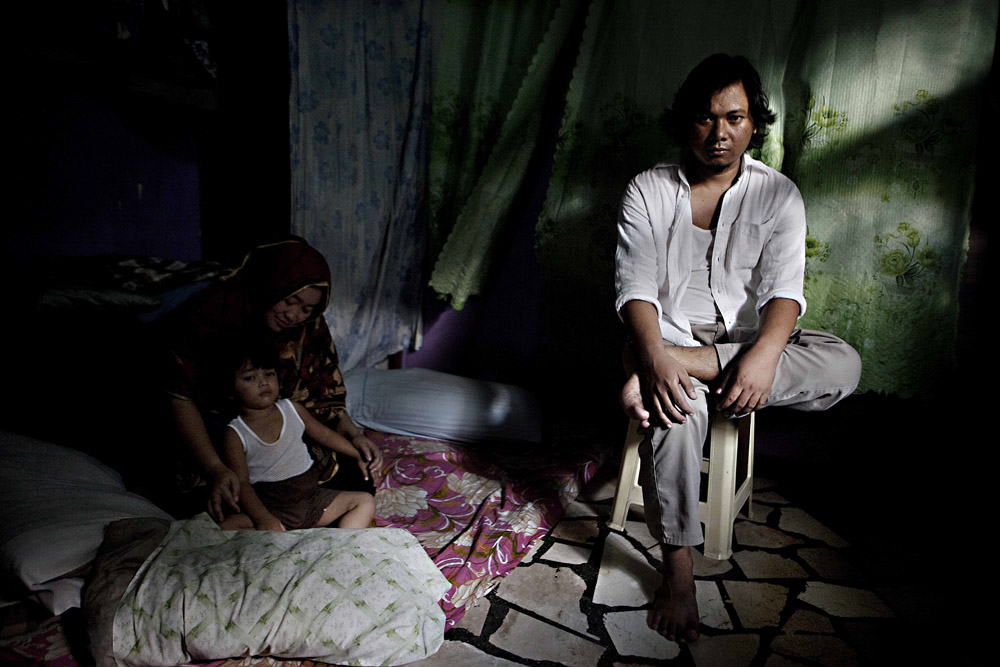 |
| 15) Ahmad Hamja poses for a picture next to his wife and son at his home in a Muslim neighborhood of Manila, August 12, 2011. His father, Mohammed Hamja, spent nearly four years in prison for kidnapping an American missionary couple before being acquitted in 2005. He was arrested because someone in his village falsely pointed him to authorities as a member of the terrorist Abu Sayyaf Group in an effort to win more than $1000 from the American-funded ‘Rewards for Justice’ programme, which gives cash prizes to citizens who identify terrorists [Joe Penney/Al Jazeera] |